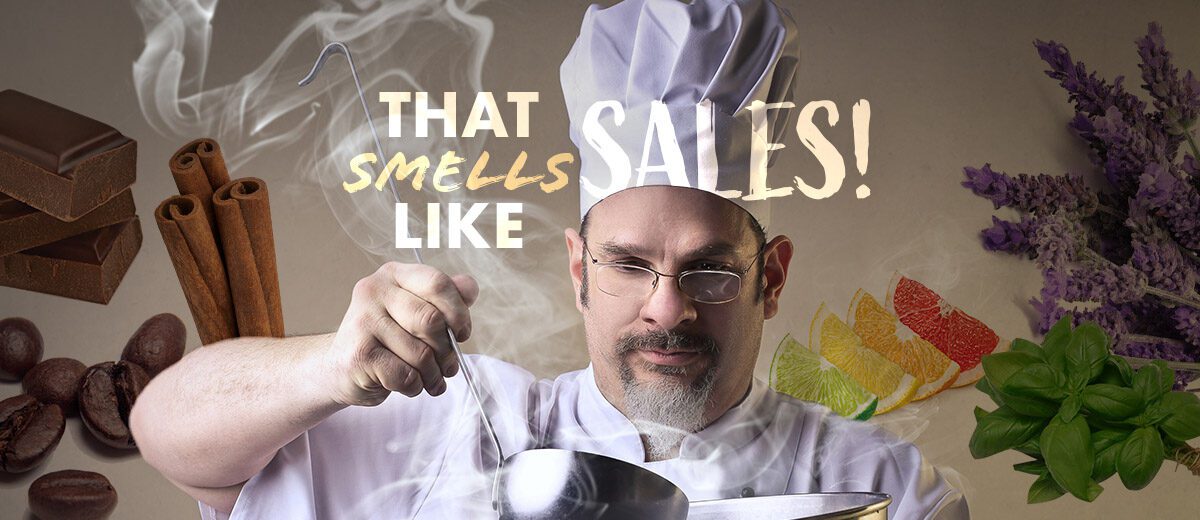
The Smells That Make Customers Spend More
Did you know the way your business smells could entice customers to spend more money? Here’s everything you need to know about scent marketing.
I stumbled across this article while doing research for a podcast episode. I’ve always been fascinated by the things that “encourage” people to purchase. One of my favorites in the foodservice industry is exploiting a customer’s olfactory sense. Whether intentional or not, wafting aromas and delicious smells sell more food! In episode 35 of Dennis Knows Food, I discuss the success one operator saw by tapping into the power of scent. Check out the episode to hear their secret scent weapon for selling more pies.
Admittedly, this tactic has secured my brand loyalty for decades. Whenever I travel, I prefer a particular chain of gas stations for their restrooms–simply because they’ve always smelled pleasant (and clean).
This article does have a retail vibe, but it’s easy to replace “shoppers” with guests, customers, or diners as you’re reading.
-Luke LaBree
The Smells That Make Shoppers Spend More
By Marisa Sanfilippo
While shopping, you might want to pay more attention to how things smell in the stores you visit. Those scents just might make you spend more. While lighting and music can play big roles in how much people spend, research has indicated that certain kinds of smells can also inspire shoppers to spend more.
- Smell has a strong link to emotion and, therefore, spending.
- Scent marketing and scent branding are complex strategies involving science and art, intended to enhance customer loyalty and spending.
- Using ambient scent can make your business smell good and has other applications, such as decreasing stress and anxiety.
What is scent marketing?
 Scent marketing is simply the strategic use of fragrance at specific consumer touchpoints. The right scent can allow you to create an instant emotional connection with the customer and make the shopping experience more memorable.
Scent marketing is simply the strategic use of fragrance at specific consumer touchpoints. The right scent can allow you to create an instant emotional connection with the customer and make the shopping experience more memorable.
It is both aggressive and subtle. It is aggressive because it allows businesses to reach people beyond the confines of their shop as the chosen scent can be wafted through open doors and windows. It is subtle because most consumers don’t realize the scent they’re smelling is intentional rather than coincidental.
The power of scent
Scents can influence people’s emotions, so they have the potential to affect consumer behavior, according to ThoughtCo. Aromas of lavender, basil, cinnamon, and citrus are relaxing, whereas peppermint, thyme and rosemary are invigorating. Ginger, cardamom, licorice, and chocolate tend to stir romantic feelings, while rose promotes positivity and happiness.
Simple smells, as opposed to complex blends of scents, are powerful motivators when it comes to spending, researchers at Washington State University found. That’s because simple smells, such as citrus and pine, don’t require much mental processing from the shopper, freeing their brains to conjure images associated with these fresh scents.
How do businesses use scent marketing?
Scent marketing is used to trigger a certain emotion in potential customers, subtly encouraging them to not only incorporate a scent into their brand identity, but also to spend more time in their stores or places of business to improve customer experience, all the while creating positive memories with those scents that will keep them going back to the product or service (brand loyalty).”
One study published in the International Journal of Marketing showed that scent marketing increased Nike customers’ intent to purchase by up to 84%, suggesting scent marketing could have a powerful effect on consumer behavior. Another case study indicated that gamblers put 45% more quarters into slot machines when the area is artificially scented. The research noted that our sense of scent is linked directly to our limbic system, which controls memory and emotion, and that ambient scent offers the following benefits:
- Ambient scent boosts recognition and memory performance.
- It increases the time consumers spend in a shop or business.
- It elevates mood and a person’s level of enjoyment
- It improves the quality of a service encounter.









